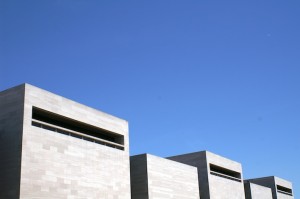
“Experimentation can sometimes look weird at first, but it is a necessary part of figuring out how to make our human-built world better,” writes Aaron Betsky in his December 2014 Architect column. The implicit suggestion is that architectural experimentation is a good and necessary thing. But buildings that “look weird” are one thing, buildings that act weird are another. Buildings, unlike most artifacts, must last a long time—hundreds of years—so in terms of construction, weirdness should be avoided. In the sixteenth century, the great Palladio built revolutionary buildings, but he did so using tried and true technology, which is why so many of his works have survived. On the other hand, the National Air and Space Museum in Washington, D.C., which is barely 40 years old, just announced that its facade will be “revitalized” as part of a $30 million renovation. When Gyo Obata of HOK designed the museum in 1976, he matched the Tennessee marble skin to the National Gallery across the Mall. But he didn’t match the way it was used. John Russell Pope, used marble that is 4-8 inches thick; the marble on the Air and Space Museum is only 1 1/4 inches thick. Over the years, the thin slabs have begun to bow and crack, and now have to be entirely replaced. The marble skin of I.M. Pei’s nearby East Building of the National Gallery (1978) also failed, although for a different reason: the stainless steel anchors of the marble skin had to be replaced and the entire marble wall rebuilt. There is nothing novel about architectural veneer; the ancient Romans covered the brick structure of the Pantheon with marble slabs, and a thousand years later Charles McKim used basically the same technology in the Morgan Library. The Romans, McKim, and Pope, used marble to build thick self-supporting walls that wrapped around the structure, while Pei and Obata hung the marble from the structure. No one would describe the East Building or the Air and Space Museum as weird, but their architects were experimenting in adopting untried construction methods. Of course, if you believe that today’s architects and engineers are simply smarter that those of forty years ago, you can be cavalier about innovation. But the unintended consequences that accompany new materials and novel techniques are difficult to predict precisely because they are unintended. Better to go slow.
